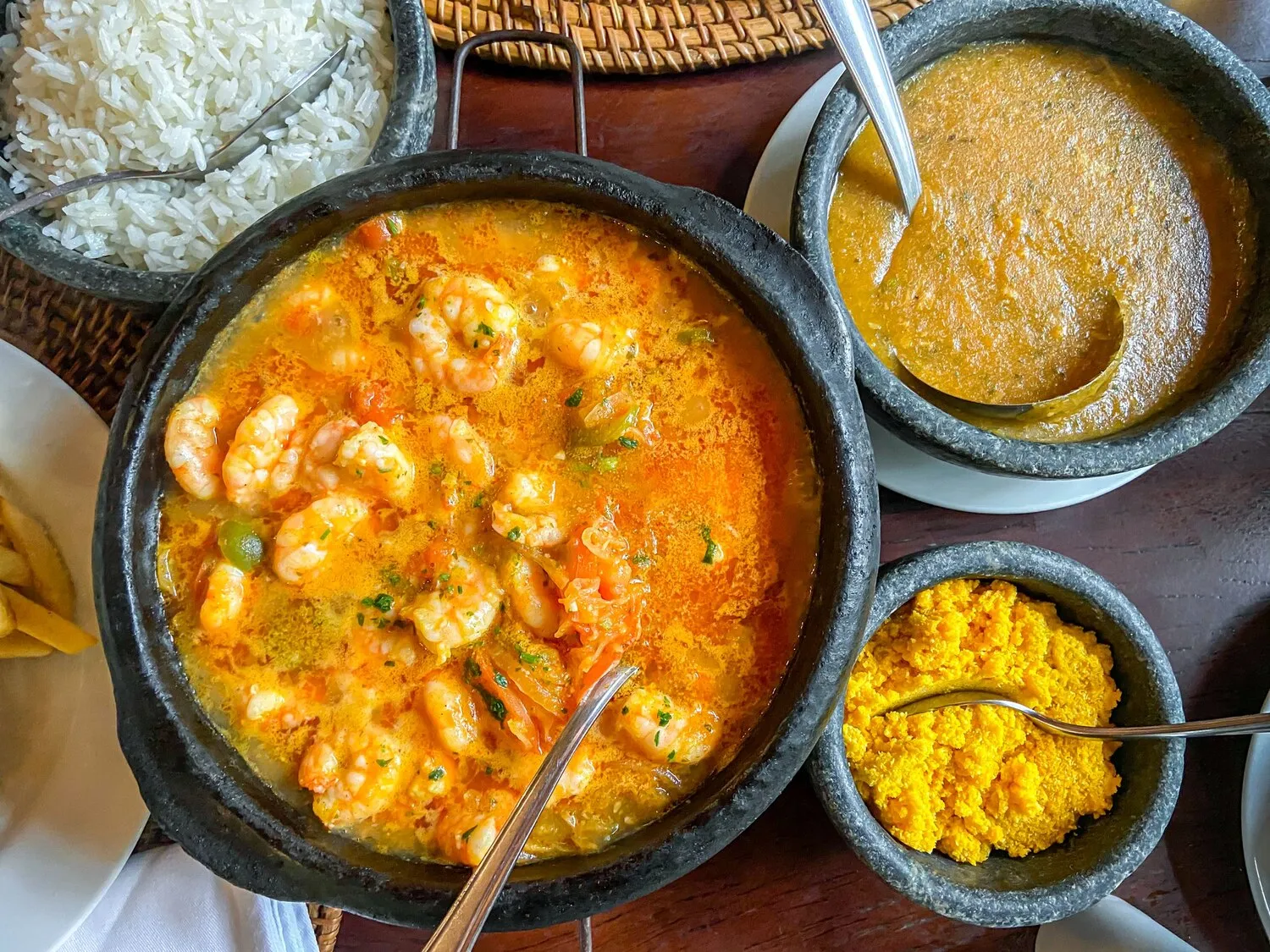
Moqueca
A flavorful Brazilian seafood stew cooked in a clay pot. Key ingredients include fish or shrimp, tomatoes, onions, garlic, cilantro, and coconut milk or dendê oil (palm oil).
Nutrition Facts
* The % Daily Value (DV) tells you how much a nutrient in a serving of food contributes to a daily diet. 2,000 calories a day is used for general nutrition advice.
Moqueca's origins are deeply intertwined with the history of Brazil, reflecting indigenous, African, and Portuguese influences. Indigenous cooking techniques using clay pots were combined with ingredients introduced by the Portuguese colonizers and the culinary traditions brought by enslaved Africans. The use of seafood, native vegetables, and flavorful spices showcases this fusion.
Moqueca is more than just a dish; it's a cultural symbol, representing the coastal culinary heritage of Brazil and embodying the spirit of shared meals and family gatherings.
Regional Variations
Moqueca exhibits significant regional variations, primarily between Moqueca Capixaba (from Espírito Santo) and Moqueca Baiana (from Bahia). Moqueca Capixaba traditionally doesn't use dendê oil or coconut milk, resulting in a lighter, more delicate flavor profile. Moqueca Baiana, on the other hand, incorporates these ingredients for a richer, more intense flavor.
Family and Gatherings
Moqueca is often prepared and enjoyed during family meals and special occasions. The communal aspect of sharing a pot of moqueca reinforces social bonds and celebrates culinary traditions.
Celebration of Seafood
Moqueca is a testament to Brazil's abundant coastal resources. The use of fresh, locally sourced seafood highlights the importance of sustainable fishing practices and the connection to the natural environment.
Moqueca is celebrated for its rich, savory, and slightly sweet flavors, primarily derived from seafood cooked in a creamy, aromatic broth.
The primary flavors come from the fresh seafood (typically fish or shrimp), enhanced by the sweetness of tomatoes and onions, the pungency of garlic, and the herbaceousness of cilantro. Coconut milk (in Moqueca Baiana) adds richness and sweetness, while dendê oil (palm oil) contributes a distinct, slightly earthy and vibrant flavor and color (also in Moqueca Baiana). The overall profile is a delicate balance of sweet, savory, and slightly spicy notes.
Freshness is Key
Use the freshest seafood available for the best flavor. If using frozen seafood, thaw it completely and pat it dry before cooking.
Don't Overcook the Seafood
Seafood cooks quickly. Avoid overcooking it, as it will become rubbery. Gently simmer the moqueca until the seafood is just cooked through.
Layer the Flavors
Build the flavor profile gradually. Sauté the aromatics (onions, garlic, peppers) first to develop their flavors before adding the tomatoes and seafood. Add coconut milk or dendê oil towards the end to preserve their delicate flavors.
Simmer, Don't Boil
Gently simmer the moqueca over low heat to allow the flavors to meld together without overcooking the seafood or scorching the bottom of the pot.
Use a Clay Pot (if possible)
While not essential, cooking moqueca in a traditional clay pot (panela de barro) imparts a unique earthy flavor and helps retain heat.
Explore additional Stew dishes and restaurants
Explore StewDiscover top dining spots and culinary experiences in Sao Jose.
Explore Sao JoseLearn more about the food culture, restaurant scene, and culinary heritage of Brazil.
Explore Brazil